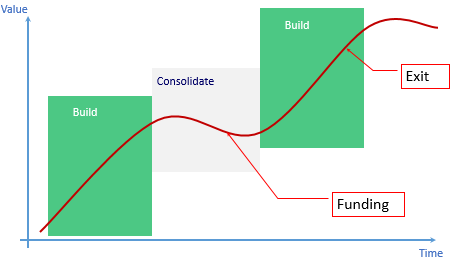 Management is all about being proactive and avoiding problems, not being good at coping. At the inquest into the London bombings, a security officer said that their workload with terrorists was so big that “…we only had time to deal with the crocodiles nearest the boat”.
Management is all about being proactive and avoiding problems, not being good at coping. At the inquest into the London bombings, a security officer said that their workload with terrorists was so big that “…we only had time to deal with the crocodiles nearest the boat”.
In fast growth companies, the CEO’s obsession must be to deal with the problems before they get too big or too numerous. In fact, you must look ahead to work out where problems will come from, and make the changes before they happen. Four techniques can help you stay ahead.
Worry about a lack of change
If your business is going places it should be changing, by definition. If your market opportunity is vibrant and lucrative, it’ll be going places with or without you. So you must learn to worry if your day’s activity and your night’s worry is not all about change. Time how long it takes to list the top five changes you have planned for your organisation – much more than five seconds and you should start to worry. You should know what these priorities are and why, and have the implementation plans at the forefront of your thinking. Change should be a way of life for you, not a reaction to something going wrong.
Focus on change not stability
Stability is what happens between the changes, so concentrate on the changes and leave the stability to take care of itself. Growth does not happen in a straight line after all: periods of building must be followed by change – organisation change may be needed to stay nimble through the next phase of growth; processes may need an upgrade; you may be adding new channels that require a different kind of approach; a new product launch; a new sales office; a new senior head, all these things are changes and the CEO should be driving them, not waiting in hope to see what happens.
Extrapolate all the time
 Think ahead, think constantly about what might become a problem; this will give you the maximum time to devise and implement the fix before the problem looms large. Spot the implications of what you’re doing and what’s happening, constantly as yourself “where’s this going, where’s this going to take us?”. If you look ahead and identify things that aren’t yet problems but will be soon, then you’re well on your way to being in control of events.
Think ahead, think constantly about what might become a problem; this will give you the maximum time to devise and implement the fix before the problem looms large. Spot the implications of what you’re doing and what’s happening, constantly as yourself “where’s this going, where’s this going to take us?”. If you look ahead and identify things that aren’t yet problems but will be soon, then you’re well on your way to being in control of events.
Fix the general case not the specific
The fourth technique is possibly the most valuable. When you have an issue or a change to implement, work out how to nail it once and for all. Work hard at learning how to differentiate between symptoms and causes. Fix the cause, the general case, and it won’t happen again, and you can move on to the next challenge